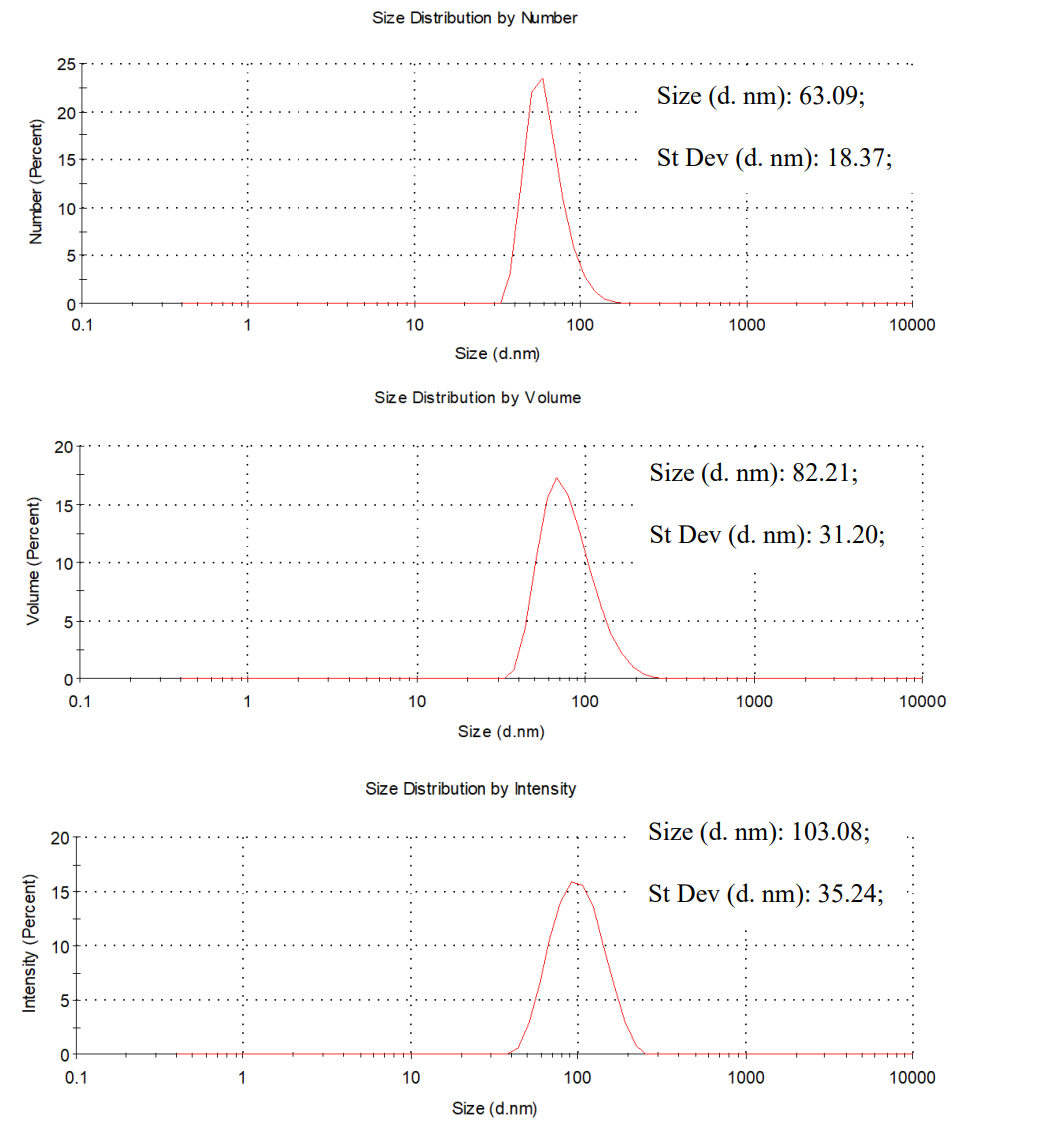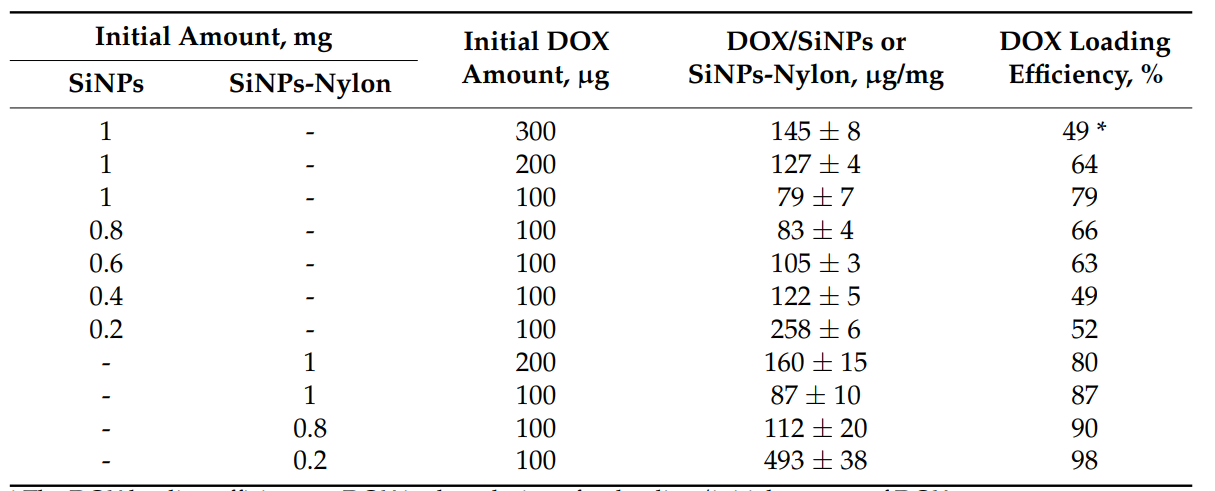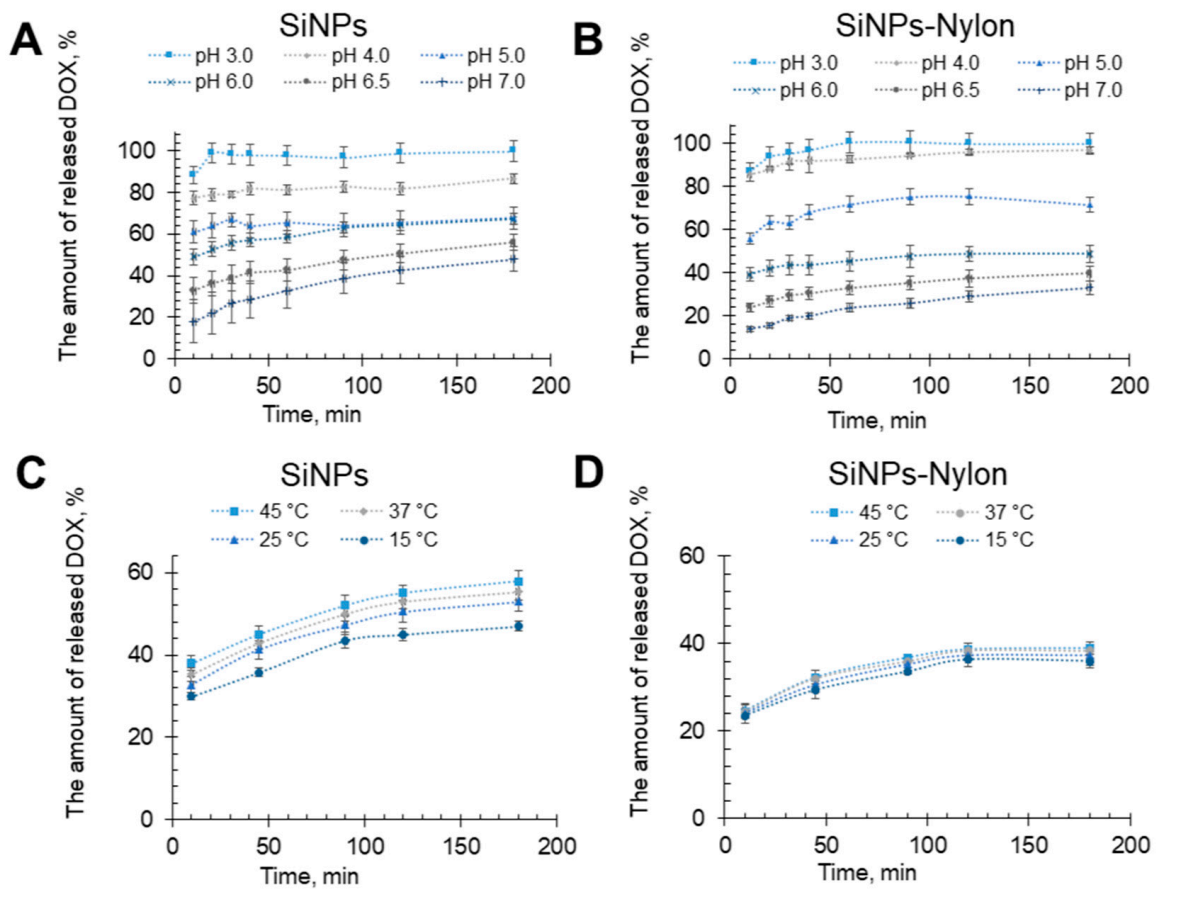Editor: Nina
This study explores the synthesis and evaluation of silica nanoparticles (SiNPs) and nylon 6-coated silica nanoparticles (SiNPs-Nylon) as effective carriers for the anticancer drug doxorubicin (DOX), demonstrating their high drug loading capacities, pH-responsive release profiles, and cytotoxicity against cancer cells, thereby highlighting their potential for targeted cancer therapy.
Key Preview
Research Question
This study investigates the efficacy of silica nanoparticles (SiNPs) and nylon 6-coated silica nanoparticles (SiNPs-Nylon) as carriers for the anticancer drug doxorubicin (DOX) in targeting cancer cells.
Research Design and Strategy
The research involved synthesizing SiNPs, loading them with DOX, and evaluating their drug release profiles and cytotoxic effects on cancer cells.
Method
The study utilized various analytical techniques, including transmission electron microscopy (TEM) and dynamic light scattering (DLS), to characterize the nanoparticles’ morphology and drug loading capacities.
Key Results
The synthesized SiNPs and SiNPs-Nylon demonstrated significant DOX loading capacities of 258 μg/mg and 493 μg/mg, respectively. The IC50 values indicated effective inhibition of cancer cell proliferation, with values of 0.08 ± 0.01 µM for HEK 293FT cells.
Significance of the Research
The findings highlight the potential of silica nanocomposites as effective drug delivery systems in cancer therapy, particularly due to their high drug loading capacities and targeted release properties.
Introduction
Nanomedicine has evolved significantly, leveraging the unique properties of nanomaterials for therapeutic applications. Silica nanoparticles (SiNPs) are recognized for their stability and biocompatibility, making them attractive for drug delivery systems. Recent innovations focus on enhancing the drug loading capacity and selective release of therapeutic agents in the tumor microenvironment. This study addresses the challenge of developing an effective delivery system for doxorubicin, a widely used chemotherapeutic agent, which often suffers from severe side effects and limited efficacy.
Research Team and Objective
The research team, comprising Victoriya Popova, Yuliya Poletaeva, Alexey Chubarov, Dmitrii Pyshnyi, and Elena Dmitrienko from the Institute of Chemical Biology and Fundamental Medicine SB RAS in Novosibirsk, Russia, conducted this study. The objective was to synthesize and characterize doxorubicin-loaded silica nanocomposites to evaluate their potential for enhanced cancer treatment.
Experimental Process
1. Synthesis of Silica Nanoparticles (SiNPs)
Key Steps:
- Silica nanoparticles were synthesized using tetraethoxysilane (TEOS) in the presence of ammonia as a catalyst. The reaction was conducted in an ultrasound bath to enhance mixing and ensure uniform particle formation.
- Various concentrations of TEOS (0.010 M to 0.200 M) were tested to determine the optimal conditions for size and stability.
- The synthesized particles were then centrifuged and washed multiple times with ethanol to remove unreacted materials and solvents.
Results and Key Data:
- Successful synthesis of SiNPs with a hydrodynamic diameter of approximately 63 ± 1 nm was achieved at an optimal TEOS concentration of 0.018 M, demonstrating a low polydispersity index (PDI) of 0.09 ± 0.01.
- The zeta potential was measured at −28.6 ± 2 mV, indicating good stability in aqueous solutions.

Figure 1.DLS size distribution data (Number, Volume, and Intensity) for method Rao et al. [68] with 0.018 M TEOS. The particle size by Number is 63 ± 1 nm (PDI = 0.09 ± 0.01).
Significance of the Result:
- The small size and high stability of the SiNPs position them as suitable candidates for biomedical applications, particularly in drug delivery, where cellular uptake is crucial.
Key Innovations:
- The use of ultrasound-assisted synthesis allowed for better control over particle size and morphology, a significant improvement over traditional methods that often lead to larger, less uniform particles.
2. Synthesis of Nylon-Coated Silica Nanoparticles (SiNPs-Nylon)
Key Steps:
- The surface of synthesized SiNPs was modified by treating them with (3-aminopropyl)triethoxysilane (APTES) to introduce amino groups.
- Following this, cyanuric chloride was used to activate the particles for nylon 6 coating, which was subsequently applied by adding a nylon 6 solution in trifluoroethanol.
- The resulting SiNPs-Nylon were washed and characterized using dynamic light scattering (DLS) and transmission electron microscopy (TEM).
Results and Key Data:
- The SiNPs-Nylon exhibited a hydrodynamic diameter of 110 ± 2 nm, with a PDI of 0.16 ± 0.01, indicating successful coating without significant agglomeration.
- The zeta potential shifted to +30.0 ± 0.4 mV, reflecting the positive charge introduced by the nylon coating.

Table 1. Hydrodynamic diameter and polydispersity index (PDI) of SiNPs and SiNPs-Nylon obtained by DLS.
Significance of the Result:
- The nylon coating enhances biocompatibility and stability, potentially improving the interactions between nanoparticles and biological systems, which is critical for drug delivery applications.
Key Innovations:
- The innovative surface functionalization approach using a dual-layer modification allows for enhanced drug loading and release properties compared to uncoated SiNPs.
3. Doxorubicin Loading onto SiNPs and SiNPs-Nylon
Key Steps:
- Doxorubicin (DOX) was loaded onto both SiNPs and SiNPs-Nylon by incubating the nanoparticles in a sodium borate buffer at pH 8.0 under stirring conditions.
- Post-incubation, the unbound DOX was removed through centrifugation and washing, while the quantity of DOX bound to the nanoparticles was quantified using UV-Vis spectroscopy.
Results and Key Data:
- The maximum loading capacity achieved was 258 µg/mg for DOX/SiNPs and 493 µg/mg for DOX/SiNPs-Nylon, with loading efficiencies of 52% and 98%, respectively.

Table 2.DOX loading SiNPs and SiNPs-Nylon capacity
Significance of the Result:
- The significantly high drug loading capacities highlight the potential of these formulations to deliver therapeutic concentrations of DOX, which is vital for effective cancer treatment.
Key Innovations:
- The introduction of nylon as a coating material significantly enhanced the drug loading capacity, demonstrating the effectiveness of surface modification in optimizing drug delivery systems.
4. Doxorubicin Release Studies
Key Steps:
- The release profiles of DOX from SiNPs and SiNPs-Nylon were evaluated in sodium acetate buffer at varying pH levels (3.0 to 7.0) and at temperatures of 15-45 °C.
- Samples were taken at designated time intervals, and the concentration of released DOX was quantified using spectrophotometric methods.
Results and Key Data:
- DOX release was pH-dependent, showing significant release at acidic pH levels typical of tumor microenvironments—60% release observed at pH 5.
- The release efficiency increased with temperature, indicating enhanced drug release at body temperature conditions.

Figure 2. DOX release from SiNPs-DOX (A,C) and SiNPs–Nylon-DOX (B,D) at pH 3.0–7.0 at 25 °C (up) and pH 6.5 at 15–45 °C (bottom). The SiNPs-Nylon-DOX with a capacity of 493 μg/mg (size 137 ± 2 nm by DLS) and SiNPs-DOX 258 μg/mg (size 147 ± 5 nm by DLS) were used for DOX release studies. All values are given as the mean ± standard deviation (SD) values. All measurements were repeated not less than three times.All values are given as the mean ± standard deviation (SD) values. All measurements were repeated not less than three times.
Significance of the Result:
- The tailored release profile aligns with the need for targeted drug delivery in cancer therapy, where higher drug availability in acidic environments can enhance therapeutic efficacy.
Key Innovations:
- The pH-responsive release mechanism represents a critical advancement in smart drug delivery systems, allowing for controlled release that mimics physiological conditions in tumors.
5. Cytotoxicity Testing
Key Steps:
- The cytotoxicity of SiNPs, SiNPs-Nylon, SiNPs-DOX, and SiNPs-Nylon-DOX was assessed using the MTT assay on A549 lung cancer cells and HEK 293FT cells, measuring cell viability after 48 hours of exposure to various concentrations of the formulations.
Results and Key Data:
- The IC50 values for SiNPs-DOX and SiNPs-Nylon-DOX were determined to be 0.98 ± 0.09 µM and 1.12 ± 0.08 µM, respectively, indicating effective inhibition of cancer cell proliferation.

Table 3. The IC50 values of SiNPs-DOX and SiNPs-Nylon-DOX for the A549 cell line per DOX or
nanoparticles concentration.
Significance of the Result:
- The reduced cytotoxicity of SiNPs and SiNPs-Nylon at lower concentrations suggests their safety profile, while maintaining efficacy against cancer cells.
Key Innovations:
- The comparative analysis of cytotoxicity between drug-loaded and unloaded nanoparticles reveals the potential for selective targeting in cancer therapy, minimizing harm to healthy cells.
By meticulously outlining these experimental processes, the study demonstrates the potential of silica nanoparticles and their nylon-coated counterparts as advanced drug delivery systems in cancer treatment, paving the way for future innovations in targeted therapies.
Conclusion
The study presents promising findings regarding the use of silica nanoparticles and their nylon-coated counterparts as effective drug delivery systems for cancer treatment. The high loading capacities and pH-sensitive release mechanisms allow for targeted therapy, potentially reducing the side effects typically associated with doxorubicin. However, the research acknowledges limitations related to the in vivo application of these nanocomposites and suggests that further studies are necessary to explore their therapeutic efficacy and safety profiles in clinical settings. Future research could focus on optimizing the surface modifications of the nanoparticles to enhance their targeting capabilities and minimize systemic toxicity.
In summary, this innovative approach using silica nanocomposites could represent a significant advancement in cancer treatment, paving the way for more effective and safer therapeutic strategies.
